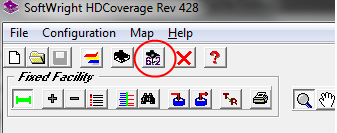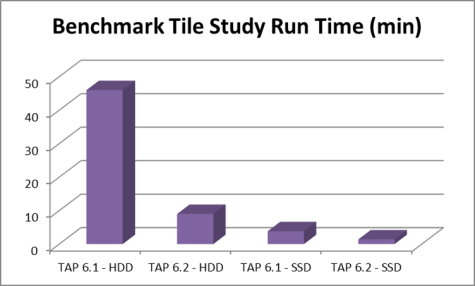SoftWright is pleased to announce the release of the accelerated Okumura Propagation Module for Terrain Analysis Package (TAP™) version 6.2. TAP™ 6.2 features an all-new calculation engine that drastically improves execution speed. Similar to previous results for the accelerated Longley-Rice and Bullington modules, study execution times in benchmark cases were reduced by 80% – combining TAP™ 6.2 with solid state drive data storage reduced study times by 98%. This is great news for customers interested in reducing the time it takes to complete large, high-resolution coverage studies.
As a terrestrial RF propagation software tool, TAP™ is data- and computation-intensive. It has been common for large area coverage studies using high-resolution data to require hours of execution time. However, TAP™ 6.2 is the first release in the next generation of TAP™ software that uses an all-new calculation engine to dramatically decrease study execution time.
 Release 2524 features our Okumura Propagation Model. Okumura is most prominently used for predicting field strength in urban areas since the underlying measurements were taken in Tokyo, Japan. However, corrections for Suburban and Open terrain are included, if needed. The explicit frequency range is 150 MHz to 1920 MHz although extrapolations up to a few GHz are not uncommon. The Okumura curves directly apply to propagation distances of 1 km – 100 km although, again, the curves can be extrapolated for longer ranges.
Release 2524 features our Okumura Propagation Model. Okumura is most prominently used for predicting field strength in urban areas since the underlying measurements were taken in Tokyo, Japan. However, corrections for Suburban and Open terrain are included, if needed. The explicit frequency range is 150 MHz to 1920 MHz although extrapolations up to a few GHz are not uncommon. The Okumura curves directly apply to propagation distances of 1 km – 100 km although, again, the curves can be extrapolated for longer ranges.
Simply design your Tile, Radial, or Target Point area coverage study in HDCoverage as you normally would and select the Okumura Propagation Model. As shown circled in red below, the “6.2” run button adjacent to the familiar TAP™ run button will be enabled. Select the “6.2” run button and the new calculation engine is launched. Study results appear in HDMapper as usual, but in far less time!
Recall from our December 2013 TAPTips that storing data on solid state hard drives (SSDs) also reduces study execution time. Our benchmarking experiments for a large tile study using 1/3 sec FLT data showed the following results:
TAP™ 6.1, Rotating HDD : 46 min
TAP™ 6.2, Rotating HDD : 9.0 min
TAP™ 6.1, SSD : 3.8 min
TAP™ 6.2, SSD : 1.4 min
By upgrading to TAP™ 6.2, Longley-Rice, Bullington, and Okumura study times may be reduced by 70% – 80% and combining TAP™ 6.2 with SSD data storage may reduce study times by 98%. Your individual results may vary based on your specific computer configuration and other factors.
Future TAP™ releases will accelerate our other propagation models. For more information or to upgrade to TAP™ 6.2, please contact sales@softwright.com.


